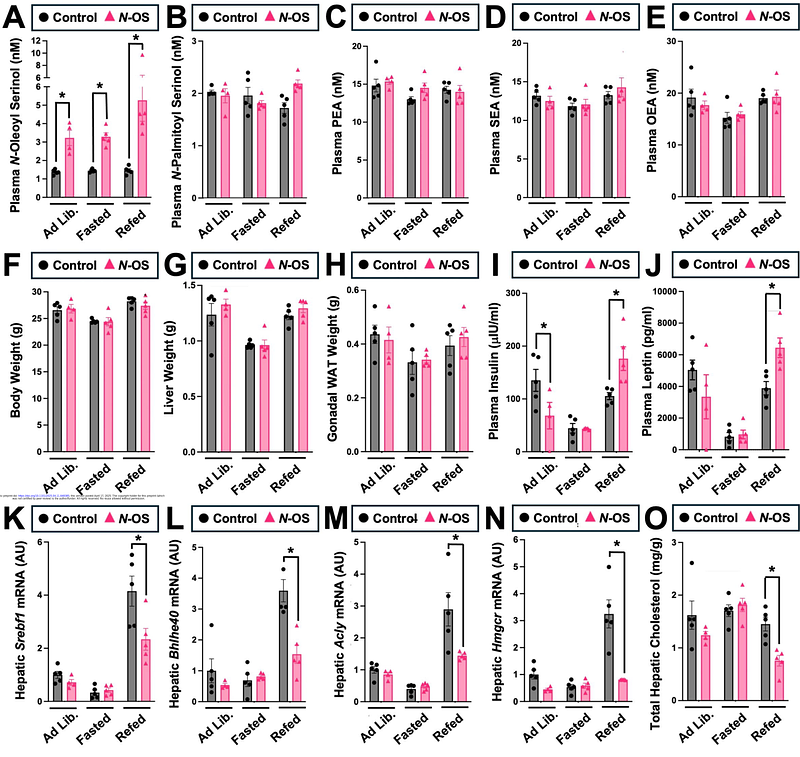Gut Microbe-Derived N-Acyl Serinol Lipids Shape Host Postprandial Metabolic Homeostasis

Gut Microbe-Derived N-Acyl Serinol Lipids Shape Host Postprandial Metabolic Homeostasis
Dutta, S.; Mahen, K. K.; Massey, W. J.; Varadharajan, V.; Burrows, A.; Horak, A. J.; Mrdjen, M.; Mouannes, N.; Orabi, D.; Osborn, L.; Grubb, T.; Hohe, R.; Banerjee, R.; Uppin, V.; Laungani, D.; Hamilton, G.; Ye, X.; Sangwan, N.; Dwidar, M.; Hajjar, A.; Willard, B.; Martin, M.; Guetschow, E.; Westcott, P.; Wang, Z.; Hazen, S. L.; Brown, J. M.
AbstractAlthough strong evidence links the gut microbiome to metabolic disease, the mechanisms linking microbiota to hormonal and metabolic responses to food are not well understood. After a meal, gut bacteria produce a wide array of small molecule, protein, and lipid metabolites originating from bacterial sources. Annotating physiological function to select gut microbe-derived metabolites is critical to understanding diet-microbe-host interactions, and to developing microbiome-inspired therapies to improve human health. Here, we have investigated the role of a poorly annotated class of gut microbiome-derived lipids called N-acyl amides in postprandial metabolic physiology. Here we show both bacterial overproduction and provision of exogenous N-acyl amides reorganize host hormone-driven metabolic transition after a meal. Moreover, N-acyl amides exert broad effects on the meal- and circadian-related reorganization of gene expression, metabolic hormones, and gut microbiome composition. Collectively, these results demonstrate that microbiota-derived N-acyl amides play a physiologic role in postprandial metabolic homeostasis in the host.